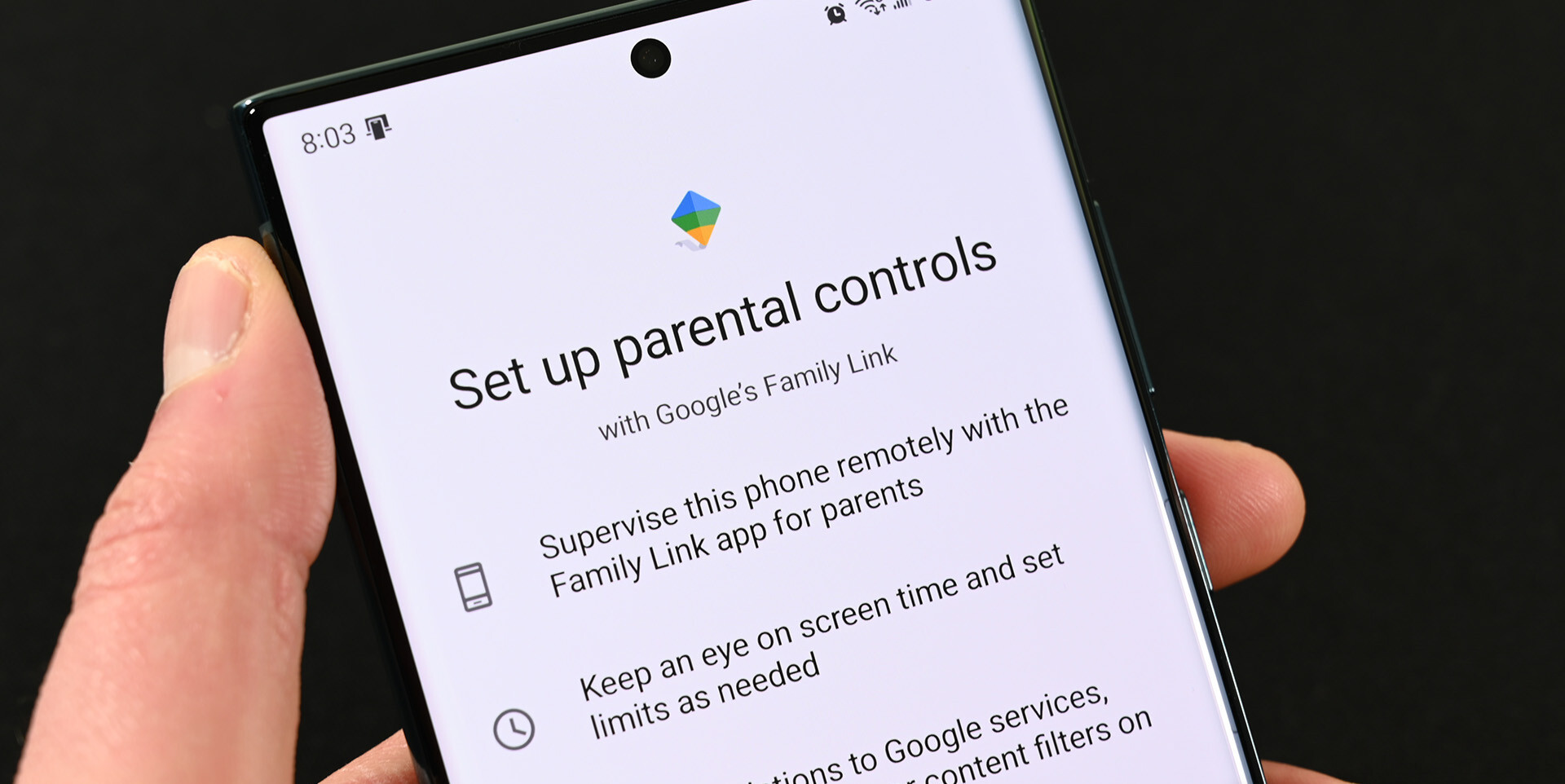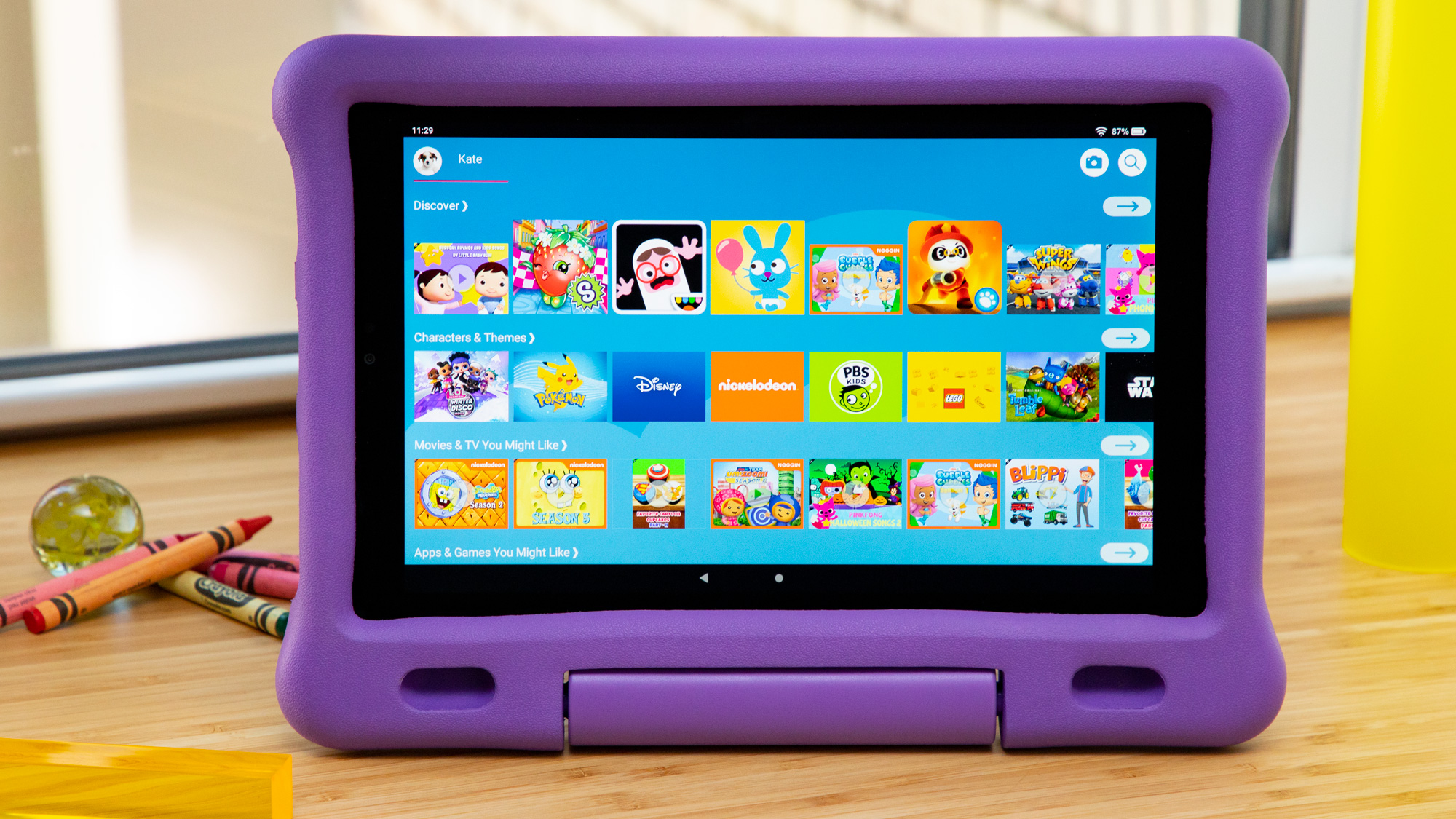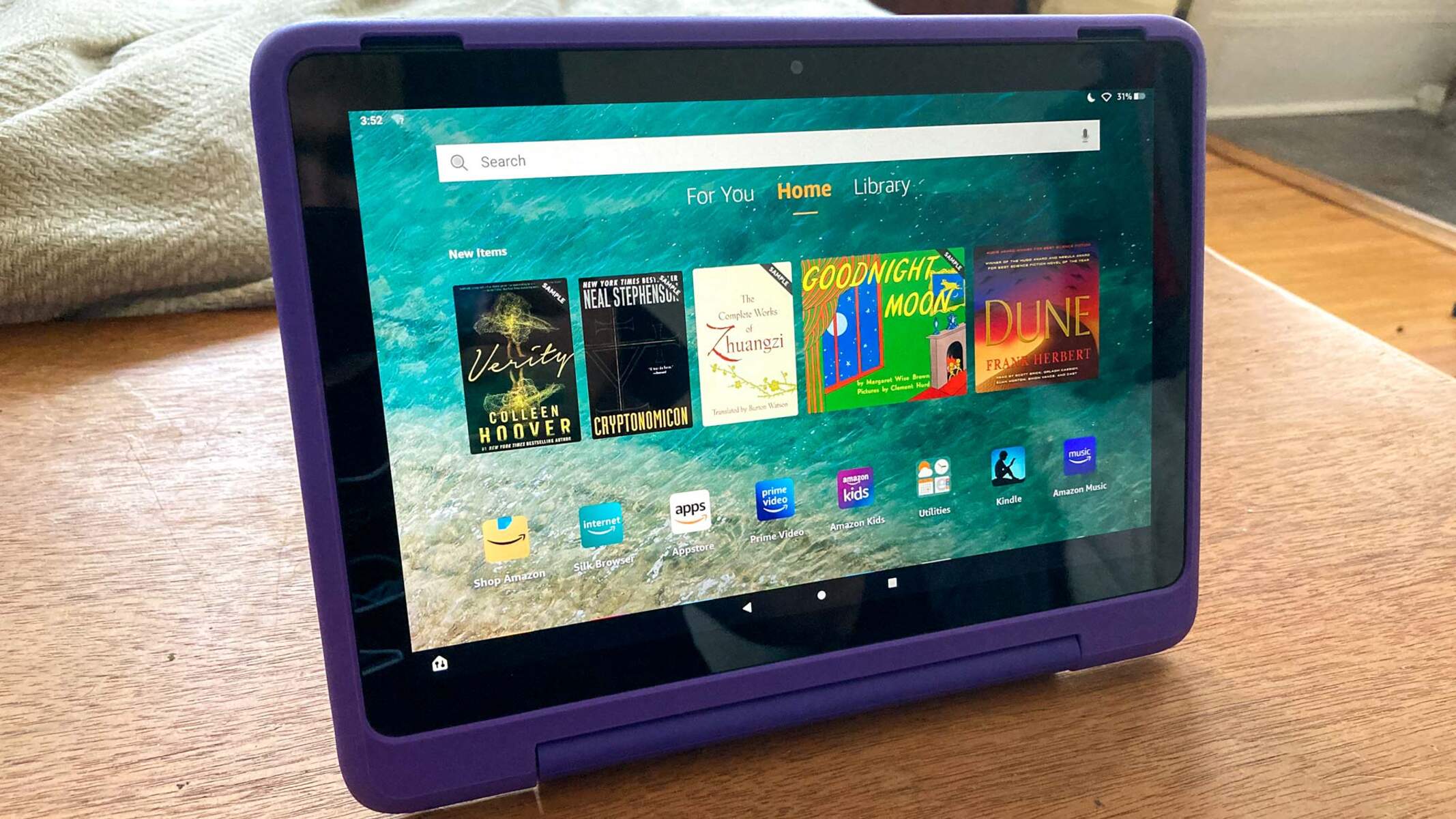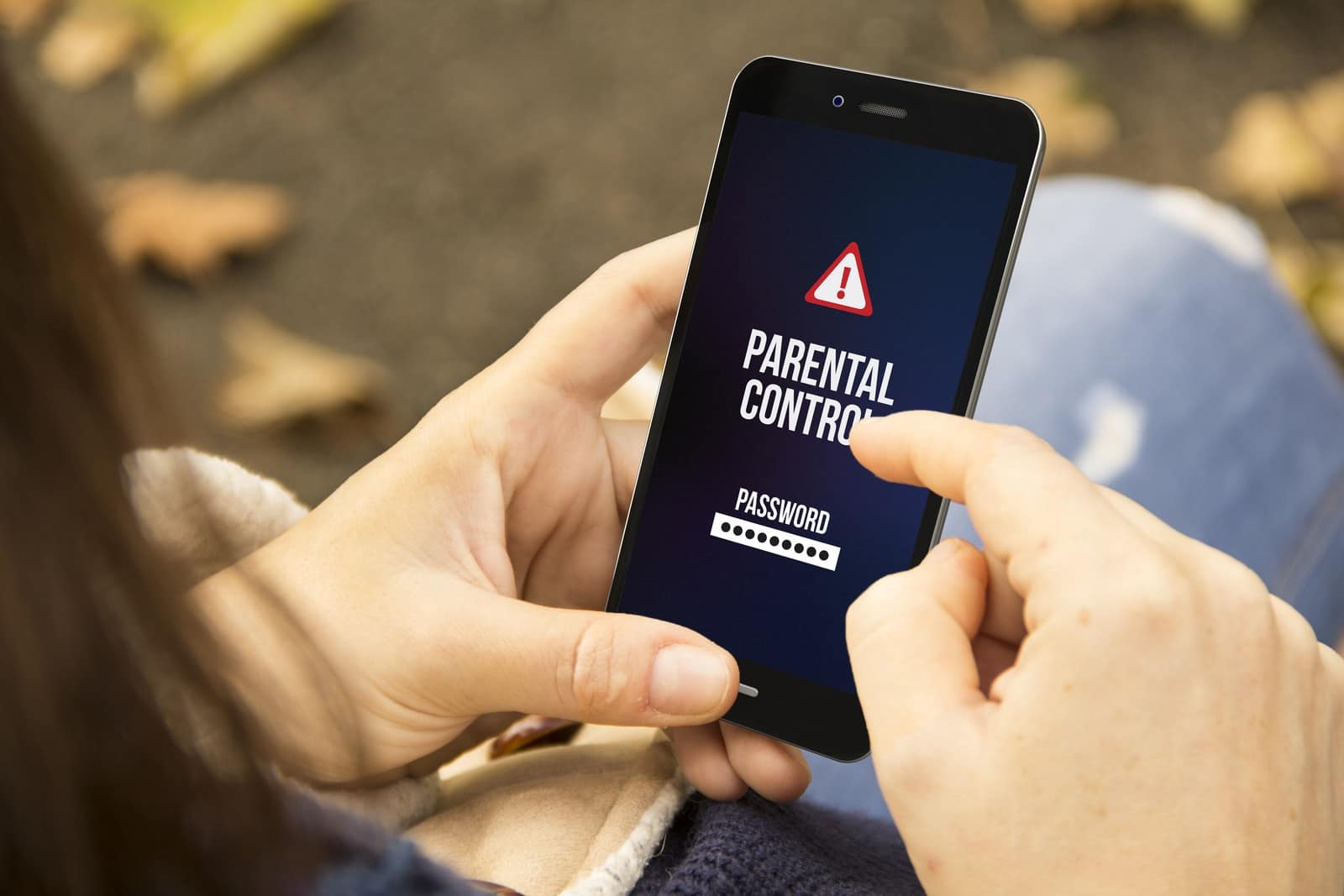Introduction
As a parent, it’s important to ensure the safety and well-being of your children in this digital age. With the proliferation of smartphones and tablets, it’s crucial to set up proper parental controls to protect your kids from accessing inappropriate content or getting addicted to screen time.
Android devices, with their versatility and popularity, offer robust built-in parental control features that allow you to regulate your child’s device usage effectively. By following a few simple steps, you can create a safe and secure environment for your children while still allowing them to enjoy the benefits of technological advancements.
This comprehensive guide will walk you through the process of setting up parental controls on your Android device, ensuring that your kids can explore the digital world while staying protected from potential risks and dangers.
In the following sections, we will explain why setting parental controls on Android is essential, and then provide step-by-step instructions on enabling built-in parental controls, creating restricted user profiles, setting app restrictions, filtering content, managing in-app purchases, setting time limits, and monitoring usage.
By implementing these parental control measures, you can strike a balance between allowing your children to benefit from technology and keeping them safe from harmful online content and excessive screen time. Let’s dive into the details and help you create a secure digital environment for your family.
Why Set Parental Controls on Android?
In today’s digital world, it’s imperative for parents to set up parental controls on their children’s Android devices. Here are a few compelling reasons why you should take advantage of these features:
- Content Filtering: The internet is a vast and sometimes dangerous place. By setting up parental controls, you can prevent your children from accessing inappropriate or explicit content that may not be suitable for their age.
- Device Addiction Management: Excessive screen time can have negative effects on children’s physical and mental health. Parental controls allow you to set time limits, helping you manage and monitor your child’s device usage to ensure a healthy balance between technology and other activities.
- Protection Against Online Predators: Parental controls can restrict access to certain websites and social media platforms, helping to safeguard your children against potential online predators and cyberbullying.
- Prevention of In-App Purchases: Many apps feature in-app purchases, which can lead to unexpected charges on your credit card if left unchecked. Parental controls enable you to manage and control these purchases, ensuring your child doesn’t accidentally make unauthorized transactions.
- Safe App Experience: Parental controls allow you to review and manage the apps your child downloads and uses, ensuring they only access age-appropriate apps that offer educational value or entertainment without compromising their safety and privacy.
- Monitoring and Accountability: By setting up parental controls, you can keep track of your child’s device usage through usage reports and activity logs. This helps you to understand their online behavior, address any potential concerns, and initiate important discussions about responsible internet use.
By leveraging the built-in parental control features on Android devices, you can create a safer digital environment for your children. These controls give you peace of mind, knowing that you have taken steps to protect your kids from the potential dangers and pitfalls of the online world.
Step 1: Enable Built-in Parental Controls on Android
Android devices come equipped with built-in parental controls that allow you to set up restrictions and manage your child’s device usage. To enable these controls, follow the steps below:
- Go to the “Settings” on your Android device.
- Scroll down and tap on “Digital Wellbeing & Parental Controls.”
- Tap on “Parental Controls.”
- Click on “Get Started” or “Set up parental controls.”
- Follow the on-screen instructions to set up a PIN or password to protect the parental controls.
- Once the PIN or password is created, go through the various options to tailor the settings to your preferences.
By enabling the built-in parental controls, you gain access to a wide range of useful features that allow you to monitor and regulate your child’s device usage effectively. These controls provide you with the flexibility to customize restrictions and create a safe online environment for your children.
It’s important to note that the specific steps to enable parental controls may vary depending on the Android version and device model. If you encounter any difficulties during the setup process, refer to the device’s user manual or visit the manufacturer’s website for detailed instructions.
Once you have successfully enabled the built-in parental controls, you can proceed to the next step of creating a restricted user profile for your child.
Step 2: Create a Restricted User Profile
Creating a restricted user profile on your Android device allows you to have granular control over your child’s app access and settings. Follow the steps below to create a restricted user profile:
- Go to the device “Settings.”
- Scroll down and tap on “Users & accounts” or “Users.”
- Tap on “Add user” or “Add user profile.”
- Select “Restricted profile” or “Restricted user.”
- Enter a name for the restricted user profile, such as your child’s name.
- Customize the settings for the restricted user profile, including app access, content filtering, and time limits.
- Once the settings are personalized, tap on “Finish” or “Create profile” to create the restricted user profile.
Once you have created the restricted user profile, you can switch to it by tapping on the user icon or name in the notification shade or lock screen. This will ensure that your child’s device usage is restricted according to the settings you have customized.
It’s worth noting that the steps to create a restricted user profile may vary slightly depending on your Android device model and operating system version. If you encounter any difficulties, refer to the device’s user manual or visit the manufacturer’s website for specific instructions.
By creating a restricted user profile, you establish a dedicated space for your child that is customized to their needs and age-appropriate. This enables you to have better control over your child’s app access, content filtering, and time limits, ensuring a safer and more suitable digital experience.
Step 3: Set App Restrictions
Setting app restrictions on your child’s Android device allows you to control which apps they can access and use. Follow the steps below to set app restrictions:
- Go to the “Settings” on the Android device.
- Scroll down and tap on “Digital Wellbeing & Parental Controls.”
- Select “Parental Controls.”
- Enter your PIN or password to access the parental control settings.
- Tap on “Apps & games.”
- Here, you can either select the “Allowed apps” option, which allows you to choose specific apps your child can use, or enable the “Supervised access” feature to restrict access to apps not suitable for children.
- If you choose the “Allowed apps” option, select the apps you want to allow your child to access. You can also decide whether they can install new apps or make in-app purchases.
- After customizing the app restrictions, tap on “Save” or “Apply” to secure the settings.
By setting app restrictions, you have the ability to regulate the types of apps your child can access on their device. This ensures they are only using age-appropriate and safe applications, reducing the risk of exposure to inappropriate content or harmful interactions.
Remember that the specific steps and options for setting app restrictions may differ slightly depending on your Android device’s make, model, and operating system version. If you encounter any difficulties, consult the device’s user manual or visit the manufacturer’s website for detailed instructions.
With app restrictions in place, you can have peace of mind knowing that your child can only use apps that align with your values and meet your standards for safety and appropriateness.
Step 4: Filter Content with Content Filtering
Content filtering is an essential feature when setting up parental controls on your child’s Android device. It enables you to block or restrict access to websites and filter out content that may be inappropriate or unsafe. Follow the steps below to enable content filtering:
- Go to the Android device “Settings.”
- Scroll down and tap on “Digital Wellbeing & Parental Controls.”
- Select “Parental Controls.”
- Enter your PIN or password to access the parental control settings.
- Tap on “Content & privacy restrictions.”
- Here, you can toggle on the “Web content filters” option to enable content filtering.
- Choose the level of content filtering that is appropriate for your child’s age and maturity. Options typically include “No filter,” “Moderate filter,” or “Strict filter.”
- You may also have the option to block specific websites or add exceptions to the content filtering rules.
- Once you have customized the content filtering settings, tap on “Save” or “Apply” to activate the filters.
By enabling content filtering, you can ensure that your child is protected from accessing inappropriate websites or content that may not be suitable for their age group. The level of content filtering you choose will depend on your child’s age and the level of internet freedom you deem appropriate.
Note that the steps and options for content filtering may vary slightly depending on your Android device model and operating system version. If you encounter any difficulties, consult the device’s user manual or visit the manufacturer’s website for specific instructions.
With content filtering in place, you can have peace of mind knowing that your child’s online experience is safeguarded, and they are less likely to be exposed to harmful or inappropriate content.
Step 5: Manage In-app Purchases
In-app purchases can sometimes lead to unexpected charges on your credit card if not properly managed. Thankfully, Android devices offer the ability to control and manage in-app purchases, ensuring your child does not make unauthorized transactions. Follow the steps below to manage in-app purchases:
- Go to the Android device “Settings.”
- Scroll down and tap on “Digital Wellbeing & Parental Controls.”
- Select “Parental Controls.”
- Enter your PIN or password to access the parental control settings.
- Tap on “Content & privacy restrictions.”
- Scroll down and find the “In-app purchases” option.
- Toggle off the “In-app purchases” option to disable them completely.
- If you want to allow in-app purchases but with restrictions, tap on “For all purchases through Google Play” and select “Authentication required for purchases.”
- Choose the authentication method, such as requiring a password, fingerprint, or other verification method, to authorize in-app purchases.
- Save or apply the changes to ensure the new settings take effect.
By managing in-app purchases, you can prevent your child from making accidental or unauthorized purchases while still allowing them to enjoy age-appropriate content and apps. This ensures a safer and more controlled mobile experience for your child.
It’s important to note that the specific steps and options for managing in-app purchases may vary slightly depending on your Android device model and operating system version. If you encounter any difficulties, consult the device’s user manual or visit the manufacturer’s website for specific instructions.
With in-app purchase management enabled, you can have peace of mind knowing that your child will not rack up unexpected charges and that their digital interactions are more securely monitored.
Step 6: Set Time Limits
Setting time limits on your child’s Android device is crucial for managing their screen time and ensuring they have a healthy balance between technology and other activities. With the built-in parental control features, you can easily set time limits to regulate your child’s device usage. Follow the steps below to set time limits:
- Go to the Android device “Settings.”
- Scroll down and tap on “Digital Wellbeing & Parental Controls.”
- Select “Parental Controls.”
- Enter your PIN or password to access the parental control settings.
- Tap on “Bedtime mode” or “Screen time management.”
- Enable the “Bedtime mode” or “Screen time limits” option.
- Set the desired start and end times for your child’s device usage.
- Additionally, you can set a total screen time limit for the day, allowing you to control the amount of time your child spends on their device.
- Save or apply the changes to activate the time limits.
By setting time limits, you can encourage your child to engage in other activities, such as physical play, hobbies, or homework, and ensure they have a healthy and balanced lifestyle.
It’s important to note that the specific steps and options for setting time limits may vary slightly depending on your Android device model and operating system version. If you encounter any difficulties, consult the device’s user manual or visit the manufacturer’s website for specific instructions.
With time limits in place, you can have peace of mind knowing that your child’s device usage is regulated and aligned with your desired boundaries, promoting a healthier relationship with technology.
Step 7: Monitor Usage with Usage Reports
Monitoring your child’s device usage is an essential part of effective parental control. Android devices offer usage reports that provide valuable insights into your child’s online activities, helping you to understand their habits and address any concerns. Follow the steps below to monitor device usage with usage reports:
- Go to the Android device “Settings.”
- Scroll down and tap on “Digital Wellbeing & Parental Controls.”
- Select “Parental Controls.”
- Enter your PIN or password to access the parental control settings.
- Tap on “Activity reports” or “View usage.”
- Here, you will find detailed reports on your child’s app usage, screen time, and other relevant statistics.
- You can view reports for specific apps, set daily or weekly screen time limits, and even remotely lock the device if needed.
- Review the usage reports regularly to gain insights into your child’s online activities and identify any areas that may require attention or intervention.
- Use the information provided in the usage reports as a basis for conversations with your child about responsible internet use and healthy device habits.
By monitoring usage with the help of activity reports, you can stay informed about your child’s digital behavior and make informed decisions to ensure their safety and well-being online.
Note that the specific steps and features for viewing usage reports may vary depending on your Android device model and operating system version. If you encounter any difficulties, consult the device’s user manual or visit the manufacturer’s website for specific instructions.
With usage reports, you gain valuable insights into your child’s device usage patterns, allowing you to guide them towards a healthy and responsible digital lifestyle.
Conclusion
Setting up parental controls on your child’s Android device is a crucial step in ensuring their safety and well-being in the digital world. By following the steps outlined in this guide, you can create a secure and controlled environment that promotes responsible device usage while protecting your child from inappropriate content and potential online dangers.
Enabling built-in parental controls on Android devices gives you access to a range of features, such as app restrictions, content filtering, time limits, and in-app purchase management. These controls empower you to tailor your child’s device experience according to their age, maturity level, and your family’s values.
Through the creation of a restricted user profile, you can customize app access, content restrictions, and other settings that best suit your child’s needs. This ensures that they can explore the digital world within safe boundaries, benefiting from educational and age-appropriate content without exposure to potential risks.
Content filtering allows you to block or filter out inappropriate websites, ensuring a safer online experience for your child. Additionally, managing in-app purchases helps prevent accidental or unauthorized transactions, giving you better control over your child’s spending habits.
Setting time limits on device usage encourages a healthy balance between technology and other activities, fostering physical, mental, and social development. By monitoring usage with activity reports, you can gain insights into your child’s online behavior and address any concerns that may arise.
Remember, each step in setting up parental controls plays a vital role in creating a safe and secure digital environment for your child. It’s important to regularly review and update these settings as your child grows and their needs evolve.
By taking advantage of the built-in parental control features on Android devices, you are better equipped to guide your child’s digital journey, ensuring they have a positive and responsible experience online.
Now, armed with this knowledge, go ahead and set up parental controls on your child’s Android device to provide them with a safe, enriching, and well-rounded digital experience.

























